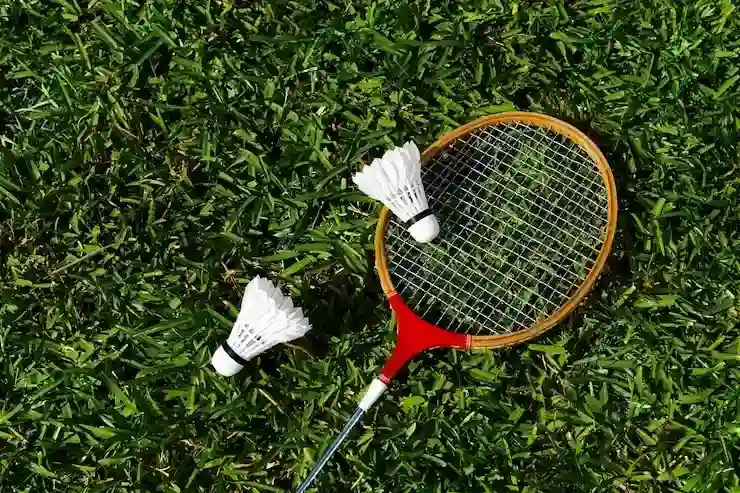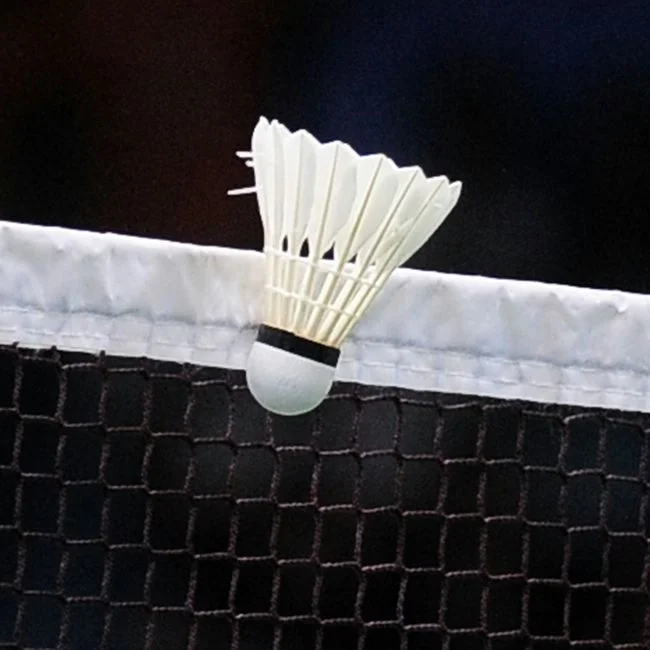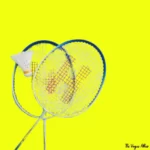
Rules of Badminton Game
Badminton is a popular racquet sport played with a shuttlecock and racket. It can be enjoyed by people of all ages and skill levels and is played at a professional level, with international tournaments such as the Summer Olympics featuring badminton as an official sport. The sport is governed by the Badminton World Federation, which sets the rules and regulations for play.
Basic Rules of Badminton
Are you ready to learn the ins and outs of badminton? In this section, we’ll cover everything you need to know to get started, from the scoring system and serving rules to court dimensions and strategies for winning rallies. Let’s dive in!
Scoring System:
- The scoring system in badminton is quite simple, with each game won by the player or team who reaches 21 points first. If the score reaches 20-all, the game continues until one player or team has a two-point lead.
- At 29-all, the player scoring the 30th point wins that game.
Serving and Receiving:
You must know all the badminton serving rules as its the most basic and important aspect of the game.

- Serving and receiving in badminton is also fairly straightforward. The right to serve alternates between players or teams every two points. The server must serve diagonally, hitting the shuttlecock over the net and into the opponent’s service court.
- The receiver must then hit the shuttlecock back over the net, starting a rally.
- The player/pair winning a game serves first in the next game.
Court Dimensions and Layout:
The dimensions of a badminton court are standardized, with a length measuring 20 feet (6.1 meters) and a width measuring 44 feet (13.4 meters). The court is divided in half by a net that stands at a height of 5 feet (1.52 meters) in the middle and slopes down to 4 feet (1.22 meters) at the edges.
Rules for rallies and play:
During a rally, players must hit the shuttlecock over the net and within the boundaries of the court. The shuttlecock must also not touch the ceiling or other objects above the court.

If a player hits the shuttlecock out of bounds or into the net, the point is awarded to the opponent.
If the shuttlecock lands on the line, it is considered in bounds. Players or teams are also not allowed to touch the net or the opponent’s side of the court while hitting the shuttlecock.
Advanced Rules of Badminton
One of the exciting aspects of badminton is the opportunity to use advanced rules and strategies to outmaneuver your opponent. Here are some key advanced rules to be aware of as you improve your game.
- Let Serve: A “let” serve occurs when the shuttlecock touches the net on the serve, but still lands in the correct serving court. In this case, the service is not counted and the serving player gets to serve again. This rule is in place to allow for fairness in the event that the service is affected by the net.
- Double Hits: A player is not allowed to hit the shuttlecock twice in a row. If a player hits the shuttlecock and it touches their body or clothing before they hit it again, it is a fault. This rule helps to prevent players from gaining an unfair advantage by using their bodies to manipulate the shuttlecock.
- Service Faults: There are several ways in which a player can commit a service fault in badminton. These include serving from the wrong court, serving before the receiver is ready, or serving an illegal serve (such as a service that is not hit upwards). If a player commits a service fault, their opponent is awarded a point.
- Boundaries of the Court: It is important for players to be aware of the boundaries of the court, as the shuttlecock must land within these boundaries for the rally to continue. If the shuttlecock lands outside the boundaries, or if a player hits it out of bounds, their opponent is awarded a point.
- Obstruction: If a player obstructs their opponent’s view of the shuttlecock, or if they physically block their opponent’s attempt to hit the shuttlecock, they have committed an obstruction fault. The opponent is awarded a point in this case.
By familiarising yourself with these advanced rules, you can better understand the nuances of the game and use them to your advantage on the court.
Equipment and Attire
Badminton is a fast-paced and physically demanding sport that requires the right equipment and attire to play at your best. Here’s a look at some of the essential gear you’ll need to get started in badminton.
Types of Rackets and Strings:
The racket is an essential piece of equipment in badminton, and it’s important to choose one that fits your playing style and skill level. There are several types of rackets available, ranging from lightweight, fast-swing models to heavy, power-focused rackets. The material of the racket frame can also vary, with options such as aluminum, carbon fiber, and composite materials available.
In addition to the type of racket, you’ll also need to consider the strings of your racket. The strings of a badminton racket are thinner and more tightly strung than those of a tennis racket, and they come in a range of tensions. Higher tension strings provide more control, while lower tension strings offer more power.
Shuttlecocks:
The shuttlecock, or shuttle, is a feathered object that is hit back and forth over the net during a game of badminton. Shuttlecocks come in different speeds and qualities, with feather shuttlecocks generally considered the highest quality and most expensive option. Plastic shuttlecocks are a more affordable option and are commonly used for recreational play.
Footwear and Clothing:
Proper footwear is important for badminton, as it can help prevent injuries and improve your movement on the court. Look for shoes with good traction, support, and cushioning to help you move quickly and comfortably during play.
As for clothing, it’s important to choose garments that allow for a full range of motion and keep you cool and comfortable on the court. Loose-fitting shorts or skirts and a lightweight shirt or tank top are good options for badminton attire. It’s also a good idea to wear socks to protect your feet from blisters and to help keep your shoes in place during play.
Strategies and Tactics in Badminton
Singles Play and Doubles Play:
Badminton involves different strategies and tactics due to the different number of players on the court. In singles play, there is only one player on each side of the court, so the player must cover a larger area and anticipate their opponent’s shots more accurately.
In doubles play, there are two players on each side of the court, allowing for more flexibility in shot placement and the ability to cover more of the court as a team.
Shot Selection:
One important aspect of strategy in badminton is shot selection. There are several different shots that players can use, including the clear, drop shot, smash, and drive. The clear is a shot that is hit high and deep into the opponent’s court, giving the player time to get into position for the next shot.
The drop shot is a shot that is hit softly and lands close to the net, making it difficult for the opponent to return. The smash is a powerful shot that is hit downward into the opponent’s court, often ending the rally. The drive is a shot that is hit with a flat trajectory and is used to catch the opponent off guard.
Court Positioning:
Proper court positioning is also crucial in badminton. Players should always be aware of their position on the court and strive to put themselves in the best position to hit the next shot. This can involve moving closer to the net or back toward the back of the court, depending on the situation.
Mindset:
In addition to physical strategies and tactics, mental approaches to the game are also important in badminton. Players should try to remain focused and composed, even in stressful situations, and use positive self-talk to keep their confidence up. It can also be helpful to have a game plan in mind and to stay adaptable to changing circumstances.
Conclusion
In conclusion, badminton is a thrilling and dynamic sport that can be enjoyed by people of all ages and skill levels. Whether you are just starting out or have been playing for years, it is important to familiarise yourself with the basic and advanced rules of the game in order to have a fair and enjoyable match.
Some key considerations to keep in mind include the scoring system, serving and receiving rules, court dimensions, and strategies for singles and doubles play.


